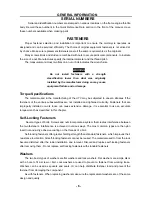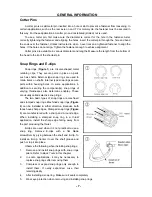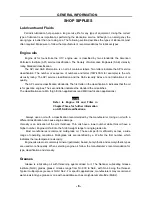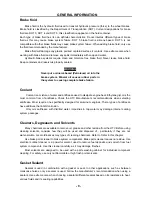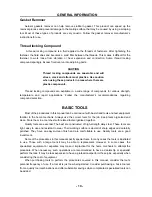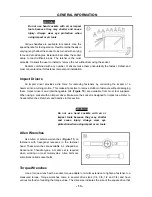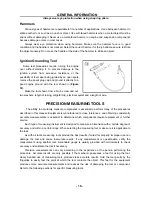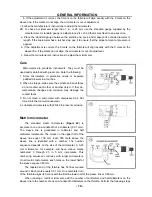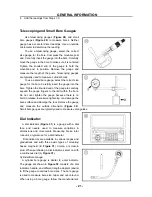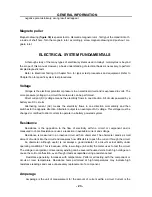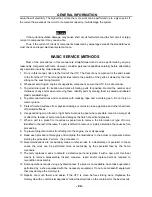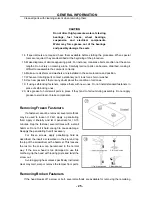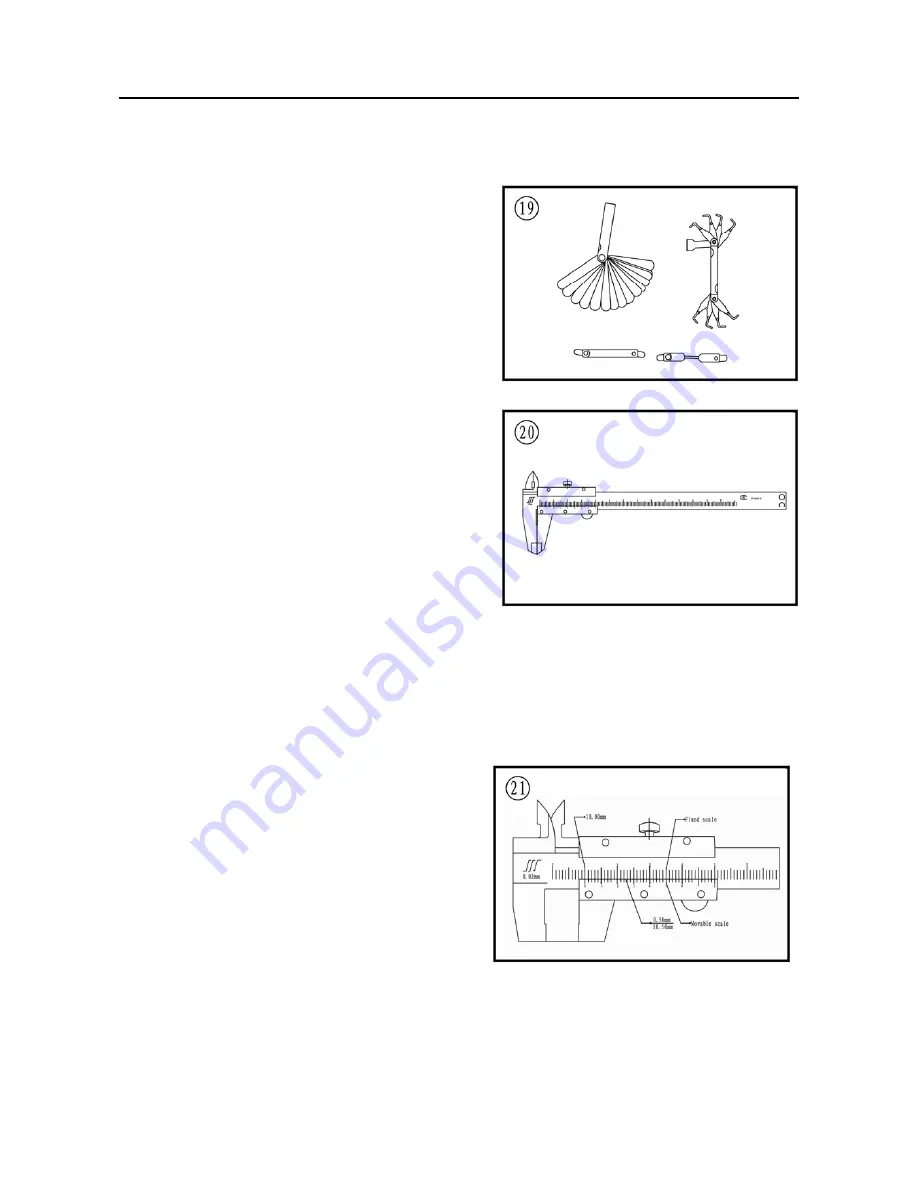
GENERAL INFORMATION
- 17 -
Feeler Gauge
Use feeler or thickness gauges (
Figure19
) for measuring the distance between two surfaces.
A feeler gauge set consists of an assortment of
steel strips of graduated thickness. Each blade is
marked with its thickness. Blades can be of various
lengths and angles for different procedures.
A common use for a feeler gauge is to measure
valve clearance. Use wire (round) type gauges to
measure spark plug gap.
Calipers
Calipers (
Figure 20
)
are excellent tools for
obtaining inside, outside and depth measurements.
Although not as precise as a micrometer, they allow
reasonable precision, typically to within 0.02mm or
0.05 mm (0.001 in.). Most calipers have a range up to
150 mm (6 in.).
Calipers are available in dial, venire or digital
versions. Dial calipers have a dial readout that
provides convenient reading. Venire calipers have
marked scales that must be compared to determine
the measurement. The digital caliper uses a
liquid-crystal display (LCD) to show the measurement.
Properly maintain the measuring surfaces of the caliper. There must not be any dirt or burrs
between the tool and the object being measured. Never force the caliper to close around an object.
Close the caliper around the highest point so it can be removed with a slight drag. Some calipers
require calibration. Always refer to the manufacturer’s instructions when using a new or unfamiliar
caliper.
To read a venire. Calipers refer to
Figure 21
. The
fixed scale is marked in l-mm increments. Ten
individual lines on the fixed scale equal 1 cm. The
movable scale is marked in 0.05 mm (hundredth)
increments. To obtain a reading, establish the first
number by the location of the 0 line on the movable
scale in relation to the first line to the left on the fixed
scale. In this example, the number is 10 mm. To
determine the next number, note which of the lines on
the movable scale align with a mark on the fixed scale.
A number of lines will seem close, but only one will align exactly. In this case, 0.50 mm is the reading to
add to the first number. Adding 10 mm and 0.50 mm equals a measurement of 10.50 mm.
Summary of Contents for HS800UTV 2014
Page 91: ...SPECIFICATIONS 79 HYDROGRAPHIC CHART Hydrographic chart Pressure ...
Page 92: ...SPECIFICATIONS 80 LUBRICATION OIL WAY LUBRICATION OIL WAY Pressure splashing oil ...
Page 289: ...CHASSIS 277 Fuel tank cap Remove the fuel tank cap by turning it counterclockwise ...
Page 353: ......
Page 354: ......
Page 355: ......
Page 356: ......
Page 357: ......
Page 358: ......
Page 359: ......
Page 360: ......
Page 361: ......




